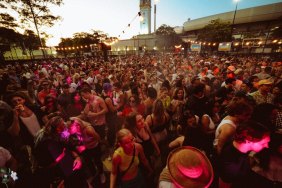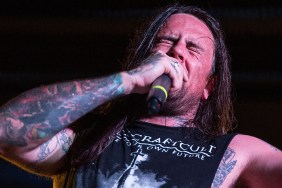Lately, the art world has been tainted by a moral panic. First, respected artist Bill Henson had 20 photographs of nude adolescents confiscated from his May exhibition at Roslyn Oxley 9 gallery for alleged child pornographic content. A police investigation followed, as did an uproar from Australia’s vocal right.

A month later, another furore exploded over the Art Monthly’s cover of a nude 6-year-old girl.
Self-proclaimed children’s rights campaigner Hetty Johnson and media commentators, including Miranda Devine and Paul Sheehan, led the public charge against Henson and those who defended him, alleging that the art world is guilty of everything from excusing paedophilia to inducing a moral erosion of family values.
In a May 26 Sydney Morning Herald article, Sheehan asked “Where has the arts community been on the issue of adolescent sexploitation?” While he is aware that sexualised images of children abound in mass advertising, he reserved his fire for “gutless” artists, writers and the film industry who, he alleges, have all been “consistently censorious on difficult moral issues for fear of offending prevailing orthodoxies about gay rights, artistic freedom or moral apartheid for Aborigines”. Sheehan also took aim at the gay community for having a “subculture of pedophilia” and the “epidemic of child abuse” in the Aboriginal community — two extremely serious and unsubstantiated claims.
Devine, Sheehan and co can’t seem to fathom that artists aren’t the enemy of women or children. They did, however, demonstrate that the independence of our art world is fragile and tenuous, vulnerable to attacks from a gabbled chorus of right-wing commentators whose agenda is not to protect the exploited, but to stifle discussion.
Of course people are entitled to think that Henson is eroticising underage girls. I, and many others, don’t agree, and the Classification Board didn’t agree either – it rated Henson’s art as G, “mild and justified”. The point is that censorship is not the answer. It doesn’t work.
It’s very easy to ban controversial images, or images that are violent or exploitative of women. It’s true that these kinds of images are symptoms of women’s subjugation. We live in an extremely violent and divided capitalist society, where a quarter of women will be sexually assaulted before they turn 18, where images of half-starved women and dolled-up children are used to sell anything from Country Road clothes to Dove cosmetics.
It’s this for-profit exploitation and objectification of women and children’s bodies that undermines women’s confidence, closets people within pre-determined gender roles, and germinates attitudes of disrespect and violence in abusers.
Any kind of useful discussion about ways for women to attain dignity, sexual liberation and equality will be squashed by such restrictive responses as censorship. Likewise, any attempts to have a meaningful discussion about the role and responsibilities of artists is disabled by censorship.
There are many in the art world who are tired of the scene’s stale commercialism, and who think art should be at the centre of discussion about politics, gender and sexuality etc. Art isn’t just about making stuff that looks pretty, it’s about the big picture, the stuff that would otherwise make you want to curl into a ball.
These roles and rights won’t be taken away easily. The art community’s defence of Henson and the right to make art that touches on controversial and ambiguous issues has been heartening, and shows that any attack on free art will be challenged creatively and courageously.












